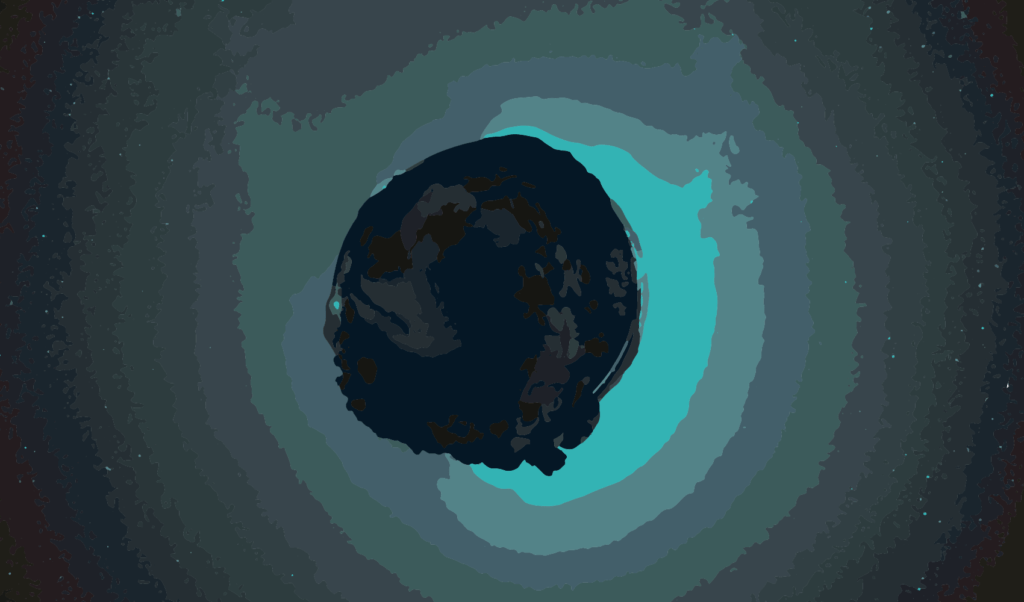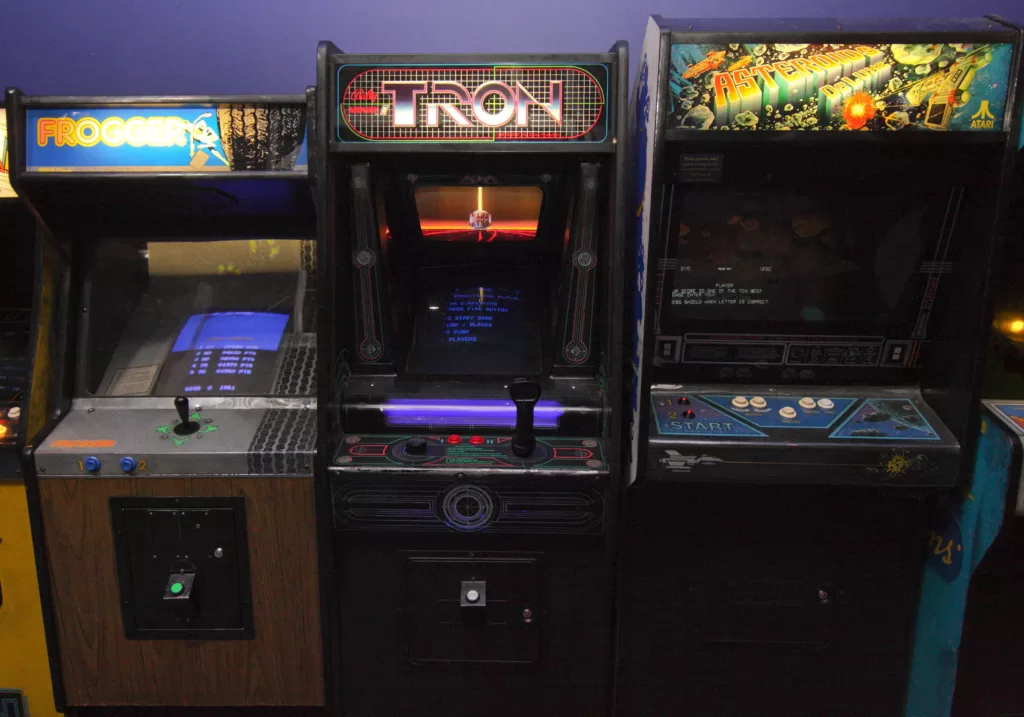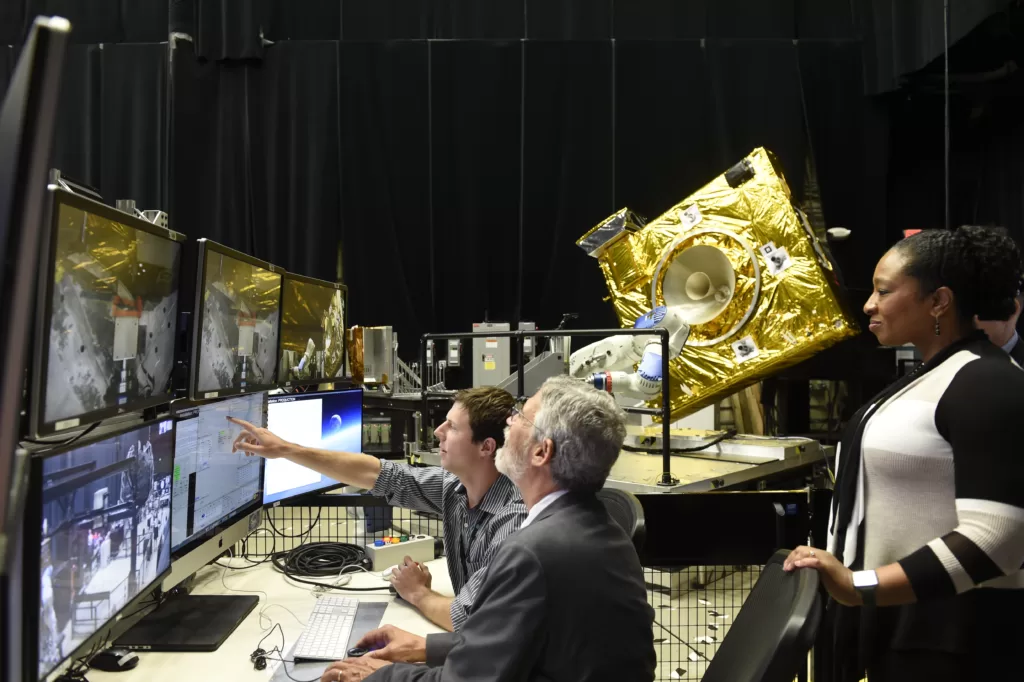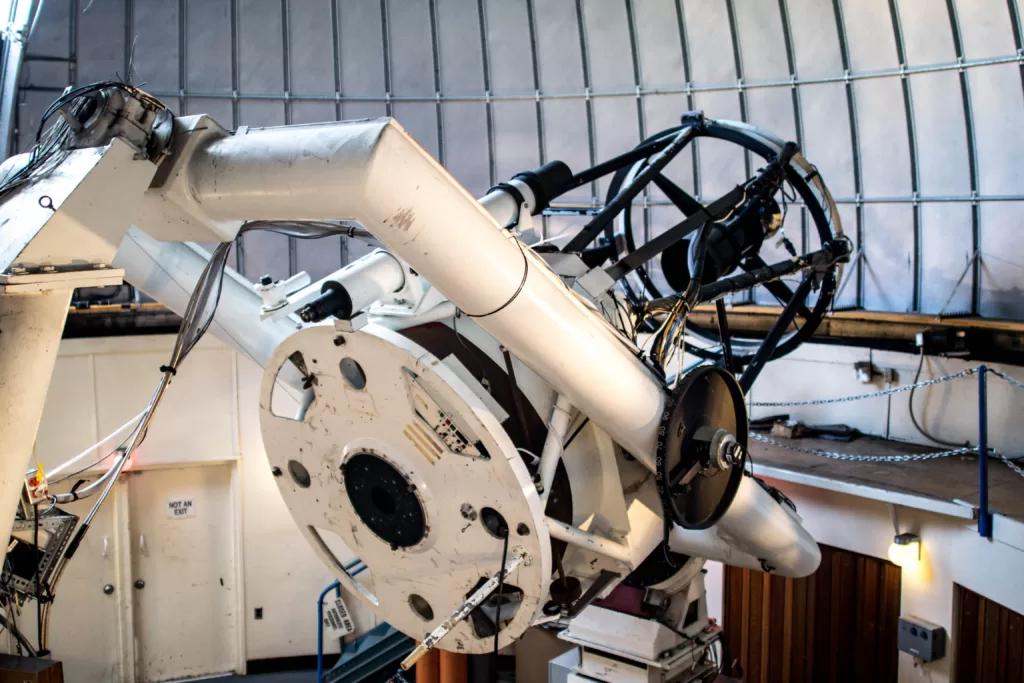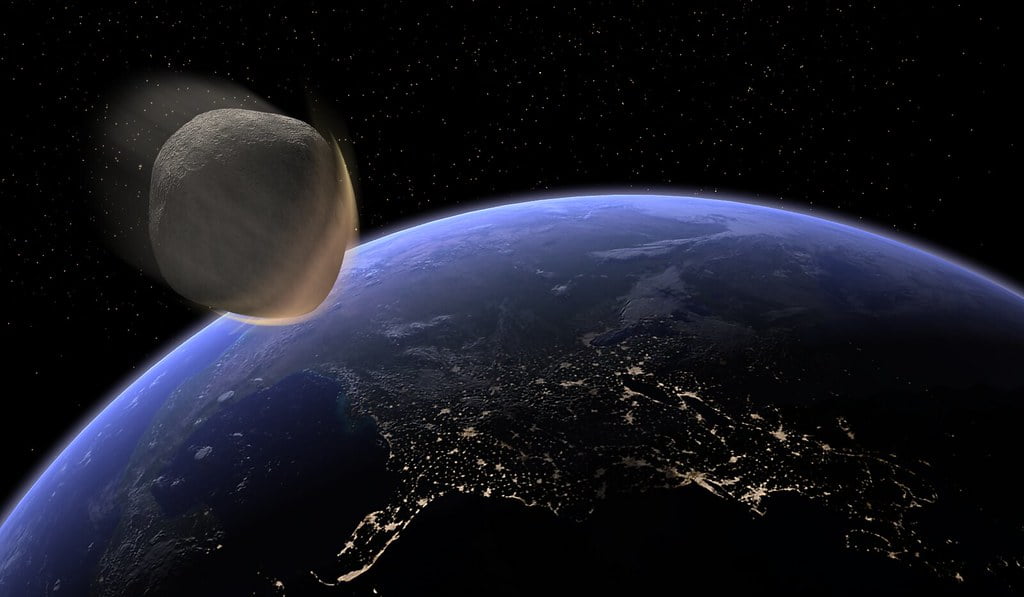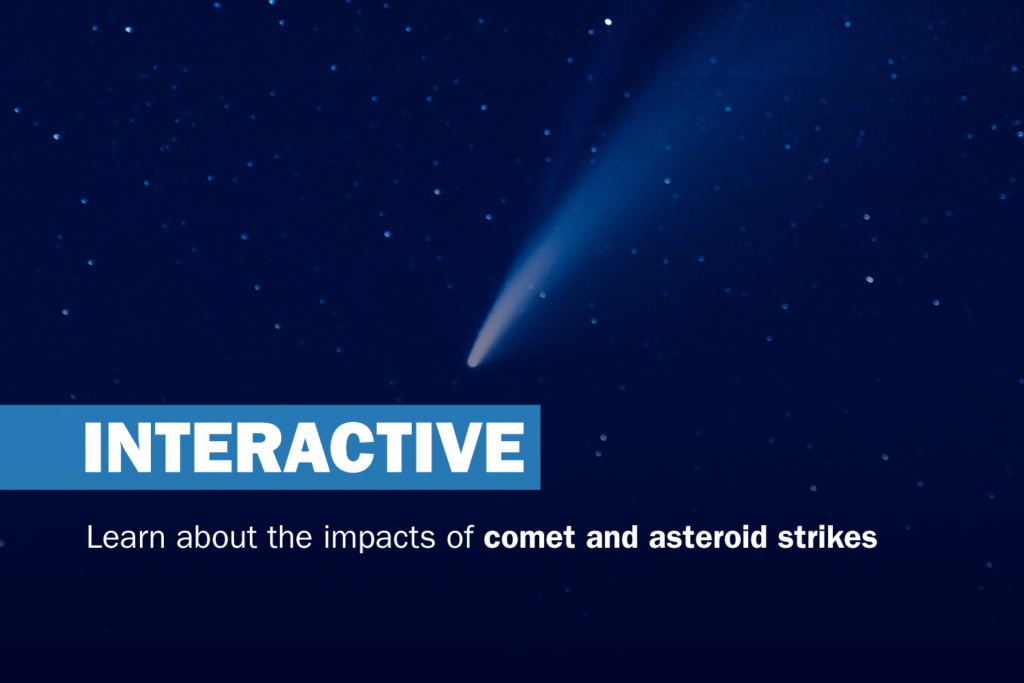Spurred by a near miss, the world built an alert system to detect asteroids heading for Earth. But it’s not clear who would decide what to do next.
 This unexpected meteor hammered home to the UN that the world needed an asteroid alert system. : M. Ahmetvaleev (NASA) CC0
This unexpected meteor hammered home to the UN that the world needed an asteroid alert system. : M. Ahmetvaleev (NASA) CC0
Spurred by a near miss, the world built an alert system to detect asteroids heading for Earth. But it’s not clear who would decide what to do next.
On the morning of 15 February 2013 a research team in central Europe was preparing its final recommendations to a United Nations subcommittee on establishing an international response mechanism to prepare for an asteroid impact on Earth. Driving the point home would be a presentation by US space agency NASA showing asteroid ‘2012 DA14’ would pass within 27,700 kilometres of Earth that very afternoon – closer than the orbit of meteorology and communications satellites. But the point would be well made before NASA’s presentation: later that morning a different asteroid exploded 30 kilometres above Chelyabinsk in Russia. The shockwave knocked down walls, blew out windows and injured over 1,600 people. No one knew the asteroid was coming.
The atmosphere protects Earth from asteroids 30 metres across or smaller – most of the time. The one that exploded over Chelyabinsk was 14 metres to 17 metres across. The asteroid’s shallow entry angle and high speed of 19 kilometres per second relative to Earth allowed it to skip through.
This asteroid’s surprise appearance is far from unique. Asteroid 2015 HD1 was discovered by NASA’s Mt Lemmon Survey Telescope on 18 April 2015, three days before it made its closest approach to Earth at 73,385 kilometres. If it had been on track to hit Earth, there would have been no time for deflection or disruption. Those in the impact zone could only have prepared to manage the consequences.
The chances of an asteroid striking Earth are very low, but if it were to happen the damage could be catastrophic. The consequences would far surpass the death, injury and material destruction likely to follow any Earth-bound natural disaster. But asteroid impacts are the only disaster the global community can prevent – if it has enough warning.
The explosion above Chelyabinsk was a definite warning, and it was heeded. The Scientific and Technical Subcommittee of the UN Committee on the Peaceful Uses of Outer Space (UN COPUOS) accepted the research team’s recommendations, and in December 2013 the UN General Assembly welcomed them “with satisfaction”. An international response mechanism was soon established to forecast asteroid impact.
The International Asteroid Warning Network (IAWN) was set up in January 2014. The Minor Planet Center, part of the International Astronomical Union, hosted the inaugural meeting at the US Harvard & Smithsonian Center for Astrophysics in Cambridge, Massachusetts.
IAWN’s membership includes 40 professional and amateur observatories from all over the world that have signed a letter of intention to participate in IAWN. Each observatory covers its own operational expenses. Any astronomer, whether part of IAWN or not, who detects a new asteroid reports it to the Minor Planet Center, which makes a fast but accurate calculation of the probability the asteroid will strike Earth. The centre immediately sends the report to NASA’s Center for Near Earth Objects (NEOs) at the Jet Propulsion Laboratory in California and to the NEOs research centre in Frascati, Italy, where the chances of an impact to Earth over the next 100 years are calculated using different methods. The results are compared and placed on the bodies’ respective websites, and IAWN is informed.
The Space Mission Planning Advisory Group (SMPAG) was established in February 2014. Its main purpose is to prepare for an international response to a NEO threat by exchanging information, developing options for collaborative research, and conducting NEO threat-mitigation planning activities. SMPAG has prepared scenarios for combinations of different-size asteroids, various areas of impact and other parameters. If an asteroid that may strike Earth were to be detected, IAWN would alert SMPAG and the UN Office for Outer Space Affairs (UNOOSA) and inform the news media.
The first practical step each space agency would take would be to prepare its government to authorise any necessary action. It is here that SMPAG’s scenarios could save crucial time. Prior calculations about an approximate match to the incoming asteroid could save two to three years in selecting the deflection or disruption to be carried out. At the same time, UNOOSA would inform all governments to facilitate coordination of an international response.
The technical aspects of an international response to the threat of an asteroid impact are well coordinated between the astronomical observatories of IAWN that search for and characterise asteroids and the space agencies of SMPAG that could deflect or disrupt them.
The gaps in Earth’s planetary defence lie in the decision-making process.
Authorisation from the governments in the impact zone and the governments whose space agencies can carry out the missions is needed before a deflection mission can launch. The fate of the planet may rest on the decision, which may need to be made quickly. But as any mission always has a chance of failure, this will be a political, economic and humanitarian decision – and it may take time. No clear hierarchy or decision-making process so far exists. Disparate groups and nations are likely to be involved, so a clearly defined process may never exist.
Both IAWN and SMPAG present yearly briefings on their work to the Scientific and Technical Subcommittee of COPUOS, increasing policymaker awareness of the issues involved in making a decision as well as the knowledge base of their own scientists. One of the largest UN committees, COPUOS and its subcommittees had 100 member states as at December 2021.
In 2029 the asteroid Apophis will pass within 31,600 kilometres of Earth. For this asteroid, humankind is prepared. Its trajectory is clear, it has been mapped and it has been assessed to have negligible risk of impact. It’s the ones Earth hasn’t spotted that remain to be prepared for.
From 2008 to 2014, Sergio Camacho-Lara participated in the establishment of the International Asteroid Warning Network (IAWN) and the Space Mission Planning Advisory Group. He is a member of the Steering Committee of IAWN. He is a professor at the Instituto Nacional de Astrofísica, Óptica y Electrónica (INAOE) in Mexico and is the Secretary General of the Regional Centre for Space Science and Technology Education for Latin America and the Caribbean, affiliated to the United Nations. Professor Camacho is a former Director of the United Nations Office for Outer Space Affairs. He declares no conflict of interest.
This article was originally published in June 2022.
Originally published under Creative Commons by 360info™.


